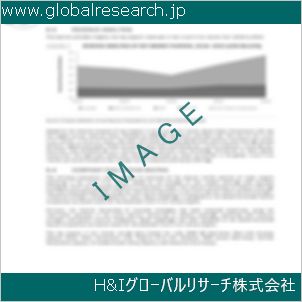Table of Contents
1 Industry Overview of Dicyandiamide
1.1 Definition and Specifications of Dicyandiamide
1.1.1 Definition of Dicyandiamide
1.1.2 Specifications of Dicyandiamide
1.2 Classification of Dicyandiamide
1.3 Applications of Dicyandiamide
1.3.1 Nuclear Application
1.3.2 Non-Nuclear Application
1.4 Industry Chain Structure of Dicyandiamide
1.5 Industry Overview and Major Regions Status of Dicyandiamide
1.5.1 Industry Overview of Dicyandiamide
1.5.2 Global Major Regions Status of Dicyandiamide
1.6 Industry Policy Analysis of Dicyandiamide
1.7 Industry News Analysis of Dicyandiamide
2 Manufacturing Cost Structure Analysis of Dicyandiamide
2.1 Raw Material Suppliers and Price Analysis of Dicyandiamide
2.2 Equipment Suppliers and Price Analysis of Dicyandiamide
2.3 Labor Cost Analysis of Dicyandiamide
2.4 Other Costs Analysis of Dicyandiamide
2.5 Manufacturing Cost Structure Analysis of Dicyandiamide
2.6 Manufacturing Process Analysis of Dicyandiamide
3 Technical Data and Manufacturing Plants Analysis of Dicyandiamide
3.1 Capacity and Commercial Production Date of Global Dicyandiamide Major Manufacturers in 2023
3.2 Manufacturing Plants Distribution of Global Dicyandiamide Major Manufacturers in 2023
3.3 R&D Status and Technology Source of Global Dicyandiamide Major Manufacturers in 2023
3.4 Raw Materials Sources Analysis of Global Dicyandiamide Major Manufacturers in 2023
4 Capacity, Production and Revenue Analysis of Dicyandiamide by Regions, Types and Manufacturers
4.1 Global Capacity, Production and Revenue of Dicyandiamide by Regions 2019-2024
4.2 Global and Major Regions Capacity, Production, Revenue and Growth Rate of Dicyandiamide 2019-2024
4.3 Global Capacity, Production and Revenue of Dicyandiamide by Types 2019-2024
4.4 Global Capacity, Production and Revenue of Dicyandiamide by Manufacturers 2019-2024
5 Price, Cost, Gross and Gross Margin Analysis of Dicyandiamide by Regions, Types and Manufacturers
5.1 Price, Cost, Gross and Gross Margin Analysis of Dicyandiamide by Regions 2019-2024
5.2 Price, Cost, Gross and Gross Margin Analysis of Dicyandiamide by Types 2019-2024
5.3 Price, Cost, Gross and Gross Margin Analysis of Dicyandiamide by Manufacturers 2019-2024
6 Consumption Volume, Consumption Value and Sale Price Analysis of Dicyandiamide by Regions, Types and Applications
6.1 Global Consumption Volume and Consumption Value of Dicyandiamide by Regions 2019-2024
6.2 Global and Major Regions Consumption Volume, Consumption Value and Growth Rate of Dicyandiamide 2019-2024
6.3 Global Consumption Volume and Consumption Value of Dicyandiamide by Types 2019-2024
6.4 Global Consumption Volume and Consumption Value of Dicyandiamide by Applications 2019-2024
6.5 Sale Price of Dicyandiamide by Regions 2019-2024
6.6 Sale Price of Dicyandiamide by Types 2019-2024
6.7 Sale Price of Dicyandiamide by Applications 2019-2024
6.8 Market Share Analysis of Dicyandiamide by Different Sale Price Levels
7 Supply, Import, Export and Consumption Analysis of Dicyandiamide
7.1 Supply, Consumption and Gap of Dicyandiamide 2019-2024
7.2 Global Capacity, Production, Price, Cost, Revenue, Supply, Import, Export and Consumption of Dicyandiamide 2019-2024
7.3 USA Capacity, Production, Price, Cost, Revenue, Supply, Import, Export and Consumption of Dicyandiamide 2019-2024
7.4 EU Capacity, Production, Price, Cost, Revenue, Supply, Import, Export and Consumption of Dicyandiamide 2019-2024
7.5 China Capacity, Production, Price, Cost, Revenue, Supply, Import, Export and Consumption of Dicyandiamide 2019-2024
7.6 Japan Capacity, Production, Price, Cost, Revenue, Supply, Import, Export and Consumption of Dicyandiamide 2019-2024
8 Major Manufacturers Analysis of Dicyandiamide
8.1 Manufacturer One
8.1.1 Company Profile
8.1.2 Product Picture and Specifications
8.1.2.1 Type I
8.1.2.2 Type II
8.1.2.3 Type III
8.1.3 Capacity, Production, Price, Cost, Gross and Revenue
8.1.4 Contact Information
8.2 Manufacturer Two
8.2.1 Company Profile
8.2.2 Product Picture and Specifications
8.2.2.1 Type I
8.2.2.2 Type II
8.2.2.3 Type III
8.2.3 Capacity, Production, Price, Cost, Gross and Revenue
8.2.4 Contact Information
8.3 Manufacturer Three
8.3.1 Company Profile
8.3.2 Product Picture and Specifications
8.3.2.1 Type I
8.3.2.2 Type II
8.3.2.3 Type III
8.3.3 Capacity, Production, Price, Cost, Gross and Revenue
8.3.4 Contact Information
8.4 Manufacturer Four
8.4.1 Company Profile
8.4.2 Product Picture and Specifications
8.4.2.1 Type I
8.4.2.2 Type II
8.4.2.3 Type III
8.4.3 Capacity, Production, Price, Cost, Gross and Revenue
8.4.4 Contact Information
8.5 Manufacturer Five
8.5.1 Company Profile
8.5.2 Product Picture and Specifications
8.5.2.1 Type I
8.5.2.2 Type II
8.5.2.3 Type III
8.5.3 Capacity, Production, Price, Cost, Gross and Revenue
8.5.4 Contact Information
…
9 Marketing Trader or Distributor Analysis of Dicyandiamide
9.1 Marketing Channels Status of Dicyandiamide
9.2 Traders or Distributors with Contact Information of Dicyandiamide by Regions
9.3 Ex-work Price, Channel Price and End Buyer Price Analysis of Dicyandiamide
9.4 Regional Import, Export and Trade Analysis of Dicyandiamide
10 Industry Chain Analysis of Dicyandiamide
10.1 Upstream Major Raw Materials Suppliers Analysis of Dicyandiamide
10.1.1 Major Raw Materials Suppliers with Contact Information Analysis of Dicyandiamide
10.1.2 Major Raw Materials Suppliers with Supply Volume Analysis of Dicyandiamide by Regions
10.2 Upstream Major Equipment Suppliers Analysis of Dicyandiamide
10.2.1 Major Equipment Suppliers with Contact Information Analysis of Dicyandiamide
10.2.2 Major Equipment Suppliers with Product Pictures Analysis of Dicyandiamide by Regions
10.3 Downstream Major Consumers Analysis of Dicyandiamide
10.3.1 Major Consumers with Contact Information Analysis of Dicyandiamide
10.3.2 Major Consumers with Consumption Volume Analysis of Dicyandiamide by Regions
10.4 Supply Chain Relationship Analysis of Dicyandiamide
11 Development Trend of Analysis of Dicyandiamide
11.1 Capacity, Production and Revenue Forecast of Dicyandiamide by Regions and Types
11.1.1 Global Capacity, Production and Revenue of Dicyandiamide by Regions 2024-2029
11.1.2 Global and Major Regions Capacity, Production, Revenue and Growth Rate of Dicyandiamide 2024-2029
11.1.3 Global Capacity, Production and Revenue of Dicyandiamide by Types 2024-2029
11.2 Consumption Volume and Consumption Value Forecast of Dicyandiamide by Regions, Types and Applications
11.2.1 Global Consumption Volume and Consumption Value of Dicyandiamide by Regions 2024-2029
11.2.2 Global and Major Regions Consumption Volume, Consumption Value and Growth Rate of Dicyandiamide 2024-2029
11.2.3 Global Consumption Volume and Consumption Value of Dicyandiamide by Types 2024-2029
11.2.4 Global Consumption Volume and Consumption Value of Dicyandiamide by Applications 2024-2029
11.3 Supply, Import, Export and Consumption Forecast of Dicyandiamide
11.3.1 Supply, Consumption and Gap of Dicyandiamide 2024-2029
11.3.2 Global Capacity, Production, Price, Cost, Revenue, Supply, Import, Export and Consumption of Dicyandiamide 2024-2029
11.3.3 USA Capacity, Production, Price, Cost, Revenue, Supply, Import, Export and Consumption of Dicyandiamide 2024-2029
11.3.4 EU Capacity, Production, Price, Cost, Revenue, Supply, Import, Export and Consumption of Dicyandiamide 2024-2029
11.3.5 China Capacity, Production, Price, Cost, Revenue, Supply, Import, Export and Consumption of Dicyandiamide 2024-2029
11.3.6 Japan Capacity, Production, Price, Cost, Revenue, Supply, Import, Export and Consumption of Dicyandiamide 2024-2029
12 New Project Investment Feasibility Analysis of Dicyandiamide
12.1 New Project SWOT Analysis of Dicyandiamide
12.2 New Project Investment Feasibility Analysis of Dicyandiamide
13 Conclusion of the Global Dicyandiamide (CAS 461-58-5) Industry 2024 Market Research Report
| ※参考情報 ジシアンジアミド(Dicyandiamide、CAS番号461-58-5)は、化学式C2H4N4に基づく無機化合物で、特に農業や工業で幅広く利用されています。こちらは、ジシアンジアミドの定義、特徴、種類、用途、関連技術についての詳細な説明です。 まず、ジシアンジアミドの定義について述べます。この化合物は、二つのシアンアミド基を持つ二量体であり、環状化合物の中で最も簡単な構造を持ちます。そのため、化学的にはアミノ化合物に分類され、特定の条件下で安定した形を示します。 ジシアンジアミドの特徴には、まずその高い熱安定性があります。この特性のおかげで、加熱しても分解しにくく、様々な環境条件での利用が可能です。また、これには水溶性もあり、特定の溶媒に対して高い親和性を持つため、化合物の調整が容易です。さらに、非毒性であるため、環境への影響も低く抑えられています。 ジシアンジアミドにはいくつかの種類がありますが、主にその純度や結晶形によって分類されます。商業的には、純度の高いものから、工業用途向けに調整された低純度のものまで幅広く利用されています。また、ジシアンジアミドは、通常、白色の結晶または結晶性粉末として存在し、吸湿性を持つため、保管には注意が必要です。 用途に関しては、ジシアンジアミドは非常に多岐にわたります。農業分野では、主要な肥料成分として利用されることが多く、特に尿素の代替品として注目されています。これは、作物の成長を促進するための窒素源として機能し、持続的な農業の実現に寄与します。また、ジシアンジアミドは、農薬の成分として使用されることもあります。特に害虫や病気を防ぐための生物農薬や生理活性物質としての利用が見込まれています。 工業分野においては、ジシアンジアミドは樹脂やコーティング材料の添加剤として機能することがあります。これには、熱硬化性樹脂や接着剤、ゴム製品の製造過程での効果的な硬化促進剤としての役割が含まれます。さらに、ジシアンジアミドは、電気絶縁材料や防火材料の中間体としても使用されることがあります。 関連技術に関しては、ジシアンジアミドの合成や使用方法に関する研究が進められています。例えば、ジシアンジアミドの生合成プロセスの最適化や、その反応メカニズムの解明が進められており、これによりその応用範囲がさらに広がることが期待されています。また、環境に優しい製造方法へのシフトを図るため、持続可能な農業技術や資源管理の観点からも、ジシアンジアミドの研究が進行中です。 さらに、ジシアンジアミドは新しい技術や素材の開発にも寄与しています。特に、ナノテクノロジーの進展に伴い、ナノ粒子の合成における分散剤や安定剤としての利用も視野に入れられています。このようにして、ジシアンジアミドは、ただの化学物質に留まらず、さまざまな分野において革新をもたらす要素として位置づけられています。 最後に、ジシアンジアミドの安全性について言及します。一般的に、低毒性で環境への影響が少ないとされていますが、使用の際には適切な取り扱いが求められます。特に、皮膚や目に対する刺激性があるため、必要な安全対策を講じることが重要です。 ジシアンジアミドは、その特性や用途の多様性から、今後もさまざまな分野での活躍が期待される化合物です。持続可能な開発や新しい技術への挑戦の中で、この化学物質は重要な役割を果たしていくことでしょう。 |
❖ 免責事項 ❖
http://www.globalresearch.jp/disclaimer












